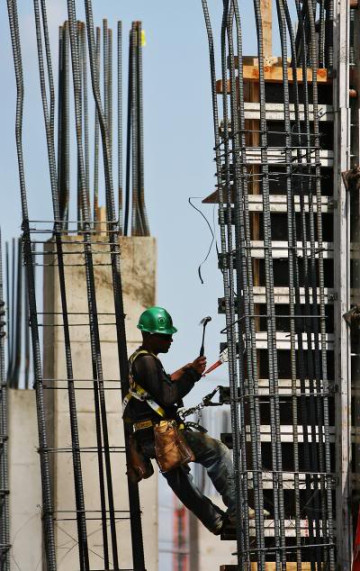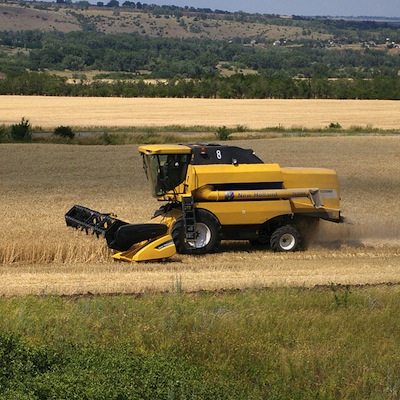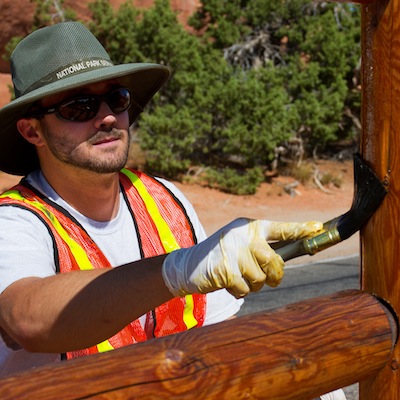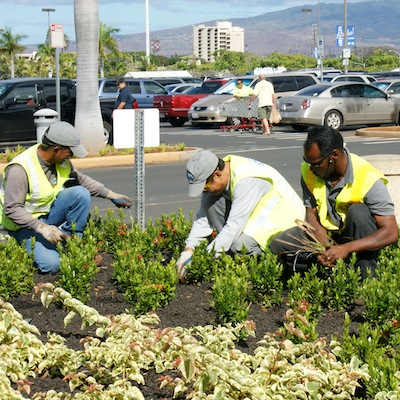The Deadliest Jobs in New England
Thursday, February 13, 2014
More than 700 workers have died from job-related injuries and other incidents in New England between 2008 and 2012, with more than half of all reported workplace fatalities occurring in just a handful of industries, according to data obtained from the U.S. Bureau of Labor Statistics.
The deadliest jobs included heavy and tractor-trailer driving, commercial fishing, construction labor, law enforcement, firefighting, and logging, the data shows. While circumstances vary widely across those occupations, all tend to be high-risk jobs, according to Tim Consedine, a regional economist at the New England office for the Bureau of Labor Statistics. (See below slides for the top 25.)
The most common injuries leading to workplace fatalities are falls and strikes by vehicles or equipment, according to James Celenza, the executive director of the Rhode Island Committee on Occupational Safety and Health, which provides workplace training throughout New England. Nationally, transportation-related accidents accounted for 40 percent of all workplace fatalities, Consedine said.
GET THE LATEST BREAKING NEWS HERE -- SIGN UP FOR GOLOCAL FREE DAILY EBLASTHidden risks to some jobs
Some jobs have risks largely hidden from the public eye. While fishing, fighting fires or fighting crime might have obvious risks, being a social worker does not. Yet social work is among one of the deadliest occupations in the New England, ranking 25th when fatalities for social work with families, health care, mental health and substance abuse are combined. Between 2008 and 2012, half a dozen social workers died on the job.
In fact, one of the most high-profile workplace fatality cases was the death of Stephanie Moulton, a 25-year-old Peabody woman who was abducted, stabbed, and beaten to death by a man under her care at a group home in Revere in 2011. “I wish I could say that type of incident was an isolated incident,” said Jason Stephany, spokesman for SEIU Local 509, which represents more than 17,000 social workers like Moulton and other human service workers across Massachusetts.
“Our folks are really dealing with the most at-risk families and individuals throughout Massachusetts,” Stephany said. That work could place his members in a wide range of situations that are potentially unsafe—from dealing with those who have developmental disabilities to entering a home where there have been allegations of abuse or neglect.
“And so workplace safety is a very important part of this,” Stephany said.
Last summer, an employee at Community Healthlink, a Worcester-based organization that provides mental health and substance abuse services, was attacked by a patient with a utility knife while driving him to his home. The worker survived.
Social workers also face health-related risks, especially for those who handle bodily fluids that could be carrying pathogens, Stephany said.
Economic factors in workplace fatalities
While risk is a factor in what jobs rank as the deadliest, so is the economic and demographic makeup of a region, according to Consedine.
“We’re not West Virginia. We’re not Houston Texas,” Consedine said. “We don’t have a lot of mining activity.” In New England, there were just three fatalities in the mining industry. In West Virginia there were 14 deaths in the industry in 2012 alone. In Texas there were 88.
Overall, on-the-job deaths are on the decline. In 2012, there were 4,383 deaths at the workplace, down from 4,693, according to the Bureau of Labor Statistics. Just one sector saw an increase after five consecutive years of declining fatalities: the construction industry. In 2012, construction accidents claimed the lives of 775 workers, up from 738 in 2011, an increase of 5 percent, according to the Bureau of Labor Statistics.
While workers in different industries may share in the same high risk, they are not equally compensated for it. Farmers and roofers had the same number of fatalities—nine—but the typical farmer earned $69,300, nearly double what a roofer did. There was one more fatality among electricians, whose salary of $49,840 put them roughly in between the incomes for farmers and roofers.
The difference unions make
Beyond the high risk, several other factors affect the safety of a workplace, experts say.
Michael Sabitoni, the president of the Rhode Island Building and Construction Trades Council, says the training unions provide to their members results in a safer workplace. He points to older worker fatality data from the Occupational Health and Safety Administration, showing that there were 354 on-the-job deaths in non-union workplaces with just 77 deaths at unionized workplaces in New England between 1998 and 2005.
“The truth of the numbers shows me that investing in training and safety leads to better outcomes,” Sabitoni said. “I think all companies should invest in these types of programs that the unions provide.”
Beyond training, unions also provide protection for workers who speak out against workplace issues, Celenza said. Although there already is a federal law against firing employees for raising questions about safety, it is easier for businesses that aren’t unionized to skirt the law than for those that are, according to Celenza. Ultimately, a well-training worker who does not have union protection may still face unsafe working conditions, Celenza said.
“There is no doubt that being in an environment where a union is present gives workers a greater ability to both speak out on and address workplace safety concerns,” added Stephany.
But training will only get you so far, Celenza added. Sometimes, when catastrophe strikes—such as a major storm that breaks out before a commercial fishing boat loaded with fish can reach shore—all the training in the world can’t avoid a tragedy, Celenza said.
Other factors: language barriers, budget cuts
One trend in fatality rates points to a cultural factor. While the overall rate is declining, it is on the rise in one population, according to Celenza: Hispanic workers. “There’s a nexus of conditions that just kind of play into that,” Celenza said.
He said Hispanic workers tend to have less training and are more willing to take risks. For Hispanic workers, particularly those who are undocumented residents, Celenza said the fears they could lose a job drives them on to greater risks.
Hispanic workers also face a language barrier. Much may be lost in translation when a foreman gives safety instruction in English to a crew that includes non-English speakers, according to Celenza. Safety instructions on equipment, such as warnings on industrial washers that caution workers not to enter them and remind them de-energize the machines before any repairs, may be posted only in English, Celenza said.
Sometimes unsafe conditions are intentional: “There’s always going to be a subset of subcontractors that are going to cut corners,” Celenza said. Bypassing normal safety procedures saves money and gives those subcontractors an unfair edge in bidding for projects, according to Celenza.
For human service workers, a critically important factor in workplace safety is staffing, according to Stephany, who cited low staffing as a factor in the 2011 slaying of Moulton and the knife attack last summer.
In most cases, the lack of adequate staffing is due to budget constraints or funding cuts, according to Stephany. “To be quite frank, sometimes it is poor management,” he added.
Since the Moulton case, there have been signs of improvement. Last August, the U.S. Department of Labor reached a settlement with the North Suffolk Mental Health Association, the agency that employed Moulton. As part of the settlement, the agency agreed to implement “comprehensive procedures and policies,” including new violence prevent program, a “buddy system” for the second and third shifts, and a more proactive approach to identifying clients who exhibit threatening behavior, according to a news release announcing the settlement.
The tragedy has also led to a new annual conference on workplace safety known as the “Stephanie Moulton Safety Symposium,” which is supported by $100,000 in funding from the Massachusetts state legislature.
SEIU Local 509 has been leading the effort to boost staffing levels at North Suffolk as well as other agencies. Additional staffing can prevent a tense situation from escalating into violence and ensures there are enough hands-on workers available to protect both a social worker and their client, according to Stephany.
In the human services sector, making workplace safety for human service workers translates into safety for their clients at well, according to Stephany. “The number one priority of human service workers in Massachusetts is keeping the clients they serve safe,” he said.
In New England, as with the rest of the nation, it appears the number of workplace fatalities is on the decline. The latest fatality census for the Boston metropolitan area revealed that were under 20 deaths in 2012, the lowest level seen since 2000, according to Consedine. Still, the 706 people who have died at their jobs over the last five years is a troubling statistic for many workplace safety advocates. “Fatalities in the workplace should be zero,” Sabitoni said.
Stephen Beale can be reached at [email protected]. Follow him on Twitter @bealenews
Related Slideshow: New England Worker Fatalities
Below are the top 25 deadliest jobs in New England, based on the absolute number of fatalities for each occupation from 2008 to 2012, the most recently available year. Along with fatality figures, the median salary for each position, the overall occupation category, and the number of on-the-job deaths for each category are included. Where necessary, descriptions of each job are also provided. Data was obtained from the New England office of the U.S Bureau of Labor Statistics in Boston. Note that data for 2012 remains preliminary. It will be finalized later this spring.
Related Articles
- Disability Pensions: Is There a Cure?
- Providence Firefighter Pensions—Disability vs. Regular
- EXCLUSIVE: Union Leader—Review All Disability Pensions
- Official—AG Needs to Investigate Providence Disability Pensions
- RI Disability Pension Tab Hits $19M
- See the List - The Top 25 Dangerous Workplaces
- UPDATED: Prov. Fire Chief Goes for Disability Pension
- The Most Dangerous Workplaces in RI
- Woonsocket Refuses to Release Disability Pension Records
- 26 Out of Top 30 Providence Retirees on Disability
- State Run Disability Services Cost Three Times Private Firms
- City Council Clashes with Taveras over Disability Pension Request
- Raimondo Launches Audit of Disability Pensions
- Councilman Demands Outside Review of Disability Pensions
- RI Temporary Disability Costs Among Highest in the Country


























































